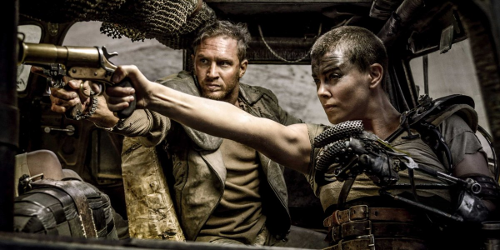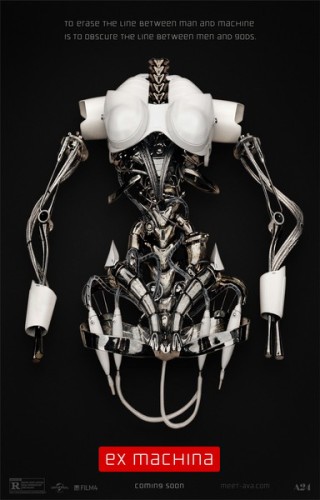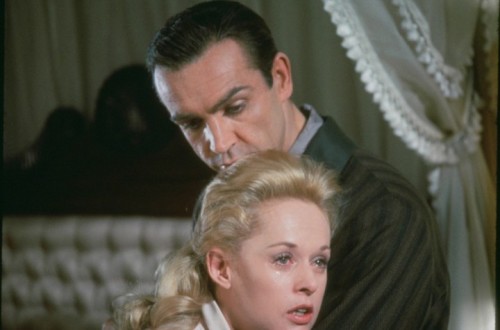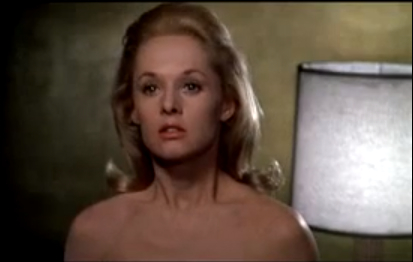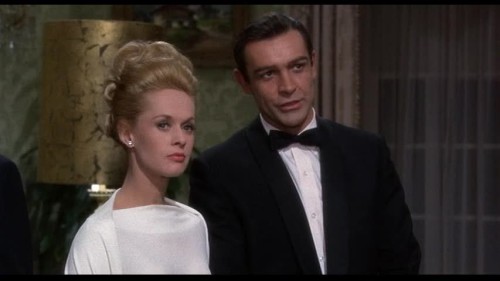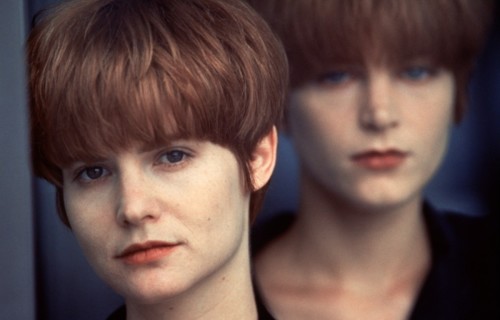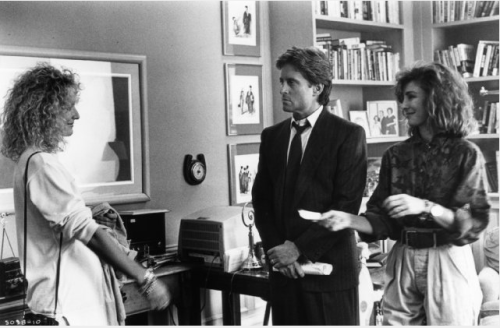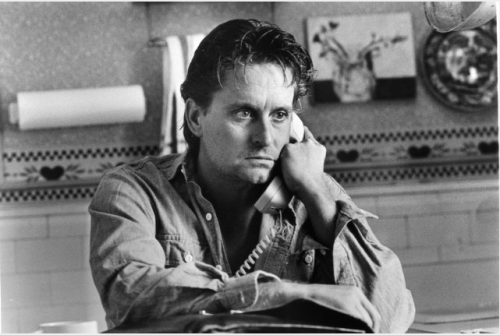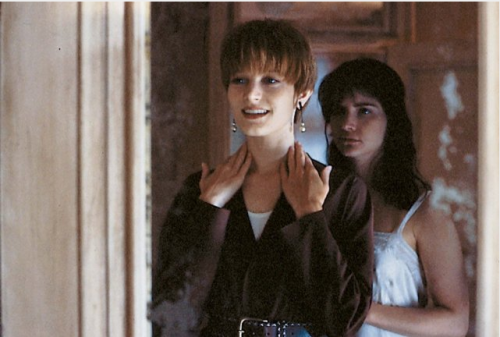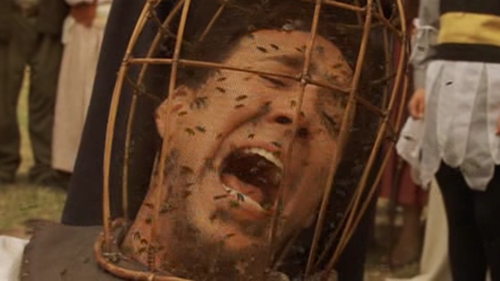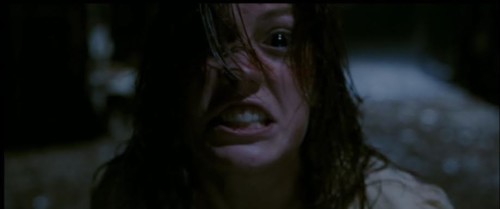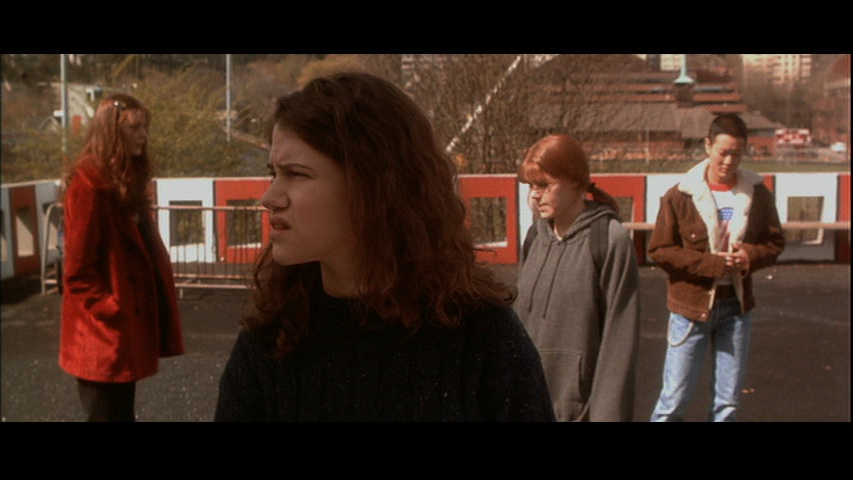This guest post by Stephanie Brown appears as part of our theme week on Masculinity.
In their DVD commnetary on the season three Angel (1999-2004) episode “Billy” (3.6), writers Jeffrey Bell and Tim Minear explain that the episode has been both “widely acclaimed” and “much loathed.” Admittedly, my opinion of the episode changes almost every time I watch it. During the summer of 2012 when I binge-watched nearly all of Joss Whedon’s oevre, this particular episode stuck out to me with its oddly in-your-face treatment of misogyny, gender, and gendered violence. While such topics are generally treated with nuance and complexity in the Whedonverse, “Billy” ditches the usual complexity in favor of portraying the show’s good guys, namely Wesley, channeling their base (and as the episode seems to argue, natural), violent instincts. Not only do the episode’s final scenes resemble The Shining, with Wesley trying to kill Fred (a character he has had unrequited feelings for) with an ax, they also seems to take a dark pleasure in “allowing” him to act out in such a violently misogynistic way.

In case you haven’t seen this particular episode, the plot revolves around Billy, a demon from a rich and powerful family who has recently escaped from the hell dimension in which he was imprisoned. While Billy himself causes no physical destruction, he “infects” men who come into contact with him with violent misogyny. After handling Billy’s blood, Wesley becomes infected and tries to chase down and kill Fred. Though Fred ultimately forgives him, Wesley fears that Billy revealed a very real and violent part of his masculininty. The incident also sends Wesley’s character down a road of brooding intropsection, acting as a turning point in his series long character arc from a buffoonish Watcher (on Buffy The Vampire Slayer) to a troubled, interesting and complex character at the end of Angel’s run. In my humble opinoin, Wesley’s evolution is one of the most fascinating and masterful character arcs on television, and this episode is a key part of that arc.

Critics of “Billy” may see it as yet another instance of Angel’s problematic treatment of female characters, as this particular episode brings questions of gender and morality to the forefront in an especially unsettling manner. Billy, as Lilah puts it, brings out in men “a primordial misogyny” that causes them to react violently toward the women around them. Not only does the characterization of this violent misogyny as “primordial” imply that violence toward women is the natural state of men, it also implies that gender itself is an essential and natural state of being. Men are men and women are women. In a universe that generally operates in gray areas, such a distinction is uncharacteristically black and white.
“Billy,” of course, isn’t the only episode Angel to be critiqued for its treatment of women and gender more generally. While Whedon’s Buffy The Vampire Slayer is, as you likely well know, frequently heralded as feminist or is at least the topic of much feminist-based discussion (even meriting a theme week from this very site), some critics regard Angel as much more problematic in its portrayal of women. Though to be fair, just as Buffy is often an exploration of the complexities of feminity, Angel can be seen as a similar exploration of the complexities of masculinity, perhaps at times at the expense of its female characters. For instance, every major female character in the Angelverse dies by the series’ end, with Cordelia and Fred both being stripped of their identities and then killed by demon possession (in season four’s “Shiny Happy People” and season five’s “A Hole In The World”.
And while this episode and Billy’s character can be read as a reinforcement of masculinity as both essential and naturally violent, I think Billy’s character can also be read as a device through which the episode demonstrates how essentialist notions of masculinity can be dangerous. As I noted earlier, one of Whedon’s signatures is that he works in gray rather than black and white, and this applies to his villains as well as his heroes. Billy, though, is a notable exception and is one of a few villains that fall short of Whedon’s usual character complexity.

Rather than a fully formed character, Billy acts as an extreme symbol of the The Patriarchy with a capital P, who forces our flawed heroes to rexamine and start to grapple with their underlying ideas about gender and mascunilinty throughout the episode. For instance, the episode opens with a scene in which Angel is teaching Cordelia to fight. In her former life on Buffy the Vampire Slayer, Cordelia used to rely on handsome, strong men to protect her from the various demons of Sunnydale, but she is now ready to fend for herself. She faces, however, some resistance from Angel, as evidenced in their exchange about the reason for her defense training.
Angel: Then – just keep moving the line. You’ll be able to keep an attacker busy until, you know.
Cordelia: What? Until he dies of old age or until you swoop in to save me? Angel, I didn’t
ask you to train me so I could stave. I already know how to stave; now I need to learn how to fight!Angel: You don’t think that I would?
Cordelia: Would what?
Angel: Save you.
Cordelia: Men-folk not always around to protect the women-folk, you know?
Angel is willing to give Cordelia the training she needs to stay alive, but he is more reluctant to give up his role as protector and savior. While this attitude may come from a place of caring, Cordelia rightly mocks him for his antiquated view of gender relations. Throughout much of the episode, Cordelia pushes back against both Wesley and Angel’s paternal concerns about her ability as a women both to fight and handle the violence that comes along with the job. Wes and Angel are both “good guys,” but they nevertheless struggle with predefined notions of what consitutes proper mascunilinty and femininity. While Angel and Wesley come from a place of concern; however, they still tend to treat Cordelia as inferior, unable to give up what they see as their masculine duty to protect her.
More troubling than Angel’s reluctance to trust Cordelia with full demon fighting responsibilities, though, is the ‘infection’ of Wesley by Billy’s misogyny-infused blood. Because Wesley is not only a white man from a wealthy family but also former member of the highly patriarchal Watcher’s Council, he’s prone to inner turmoil about gender, masculinity, and power.

Billy’s demonhood brings these latent issues violently to the forefront as Wes spends the final two acts of the episode first sexually harassing and then lashing out violently against Fred. As his generally affable, fatherly demeanor morphs into that of a terrifying, calculated killer, his once sweet crush on Fred is warped into a violently perverse sexual attraction. In this transformation we can see how seemingly benign characteristics of traditional masculinity and Billy’s twisted misogyny often fall under the same patriarchal umbrella. While they lie on opposite ends of the spectrum, they’re nevertheless symptoms of the same oppressive system.
While Wes is of course not actually a homicidal misogynist, his actions while under Billy’s spell do force him to face his inner demons (pardon the pun) and fundamentally change his relationship with both Fred and the rest of Angel Investigations. In the final scene of the episode, Wes sits alone in his dark apartment, staring at the wall when Fred comes to see him.
Wes: Fred, I tried to kill you.
Fred: That wasn’t you.
Wes: How can you know that? Something inside me was forced to the surface. Something primal, something…
Fred: Do you wanna kill me?
Wes: Oh, God, no.
Fred: It wasn’t something in you, Wesley. It was something that was done to you.
Wes: I don’t know what kind of man I am anymore.
Even though he was posessed by Billy, Wes nevertheless saw something of himself in his actions that he feels he must come to terms with. Wes of course is not only a victim of Billy’s, but also of the patriarchal definitions of masculinity that he was taught both by his father and by the Watcher’s Council. It’s these unresolved issues that Wes is now being forced to face.

At the close of the episode, Fred seems relatively unaffected by the fact that her friend and boss nearly hacked her into little pieces, while Wes sits broken and weeping. His dejection shows us that while we tend to focus on the harm that befalls those who define themselves as feminine within a patriarchal society, rigid gender roles and misogny are just as harmful to those who define themselves as masculine.
Stephanie Brown is a television, comedy, and podcast enthusiast working on her doctorate in media studies at the University of Illinois, Urbana-Champaign. You can follow her on Twitter or Medium @stephbrown.







